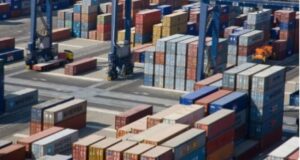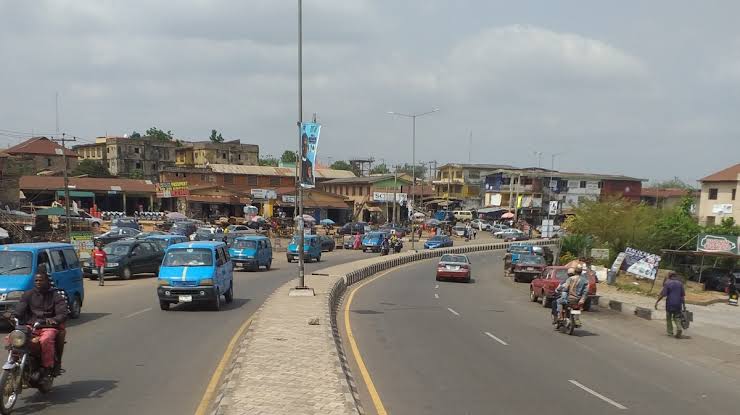
The export expansion grant (EEG) scheme is a vital policy instrument to boost the competitiveness of Nigerian products in the international market and grow non-oil exports.
As the bulk of Nigeria’s non-oil exports are agro-allied, the impact of the scheme is felt across the value chain, affecting the lives of over 10 million Nigerians directly and indirectly.
Why is EEG needed?
Nigerian exporters face cost disadvantages on account of infrastructural deficiencies and the high cost of doing business. The cost of logistics in Nigeria is among the highest in the region. The Global Competitiveness Index (GCI) evaluated by the World Economic Forum, covering 141 economies, measures national competitiveness — defined as the set of institutions, policies and factors that determine the level of productivity.
According to the GCI 2019, Nigeria was ranked 116th with a score of 48.3 compared to Kenya at 95th place with a score of 51.2. Even regional rivals such as Ghana have ranked above at 111th place whereas South Africa, the second-largest economy in sub-Saharan Africa was ranked 60th with a score of 62.4. Nigeria’s competitiveness was impacted by a lack of enabling infrastructure and skills and innovation.
Multiple taxations at federal, state and local government levels have a cascading effect and add to the cost of goods exported. Therefore, in a way, we are “exporting taxes with the goods” in the absence of a mechanism to neutralize the incidence of taxation. EEG helps to mitigate and cushion these cost disadvantages. Although it is apparent that the prevailing EEG rates (which have been reduced over time) only provide a partial relief and are certainly not sufficient.
Nigeria’s non-oil exports are still negligible and account for less than five percent of the total merchandise exports of $62 billion (WTO). The exports plummeted to $34 billion (WTO) as global demand for crude oil crashed in 2020. Even compared to our African peers, there is a great potential to increase export performance.
The merchandise exports (mostly agricultural goods) of leading sub-Saharan African countries are significantly higher than those of Nigeria (Ivory Coast: $12.2 billion; Kenya $6 billion) (WTO). Most notably, while, Nigeria’s exports in 2020 crashed, the above countries mainly exporting agricultural products even sustained their exports during the pandemic.
Regional trade under AfCFTA
Due to the size of our manufacturing sector, Nigeria has the potential to be a key trade partner for many regional countries which are outside of the ECOWAS. Improving the competitiveness of our exports is a prerequisite to our ability to take advantage of the emerging opportunity. However, this will take time as the implementation mechanism of the mega trade, the bloc is still a work in progress.
Most developing countries based their economic growth on exports and integrating with global value chains (GVC’s). A package of incentives is given to promote exports.
China gives up to 13% export tax rebate on its export despite its infrastructural advantages and high efficiency. China is the world’s No.1 exporter with merchandise exports of $2.5 trillion in 2020 (WTO).
India’s merchandise exports in 2020 were $276 billion. It offers a package of incentives that include a refund of taxes on export production, interest rate subvention, duty drawback and PLI (production linked incentive). The new flagship PLI scheme announced in 2020 has budgeted a subsidy of about $20 billion (Rupees 1459 billion) to be calculated up to 15% on total turnover (both domestic and exports) to generate employment and boost exports till 2025.
Viet Nam (population 90 million) has emerged as a leading exporter in recent years with merchandise exports of $283 billion in 2020 (ranked #20 as per WTO Report 2021) founded on infrastructural advantages, high productivity and tax incentives.
Impact of COVID-19 pandemic
The five key impact areas for non-oil export in terms of opportunities and risks are highlighted below:
While Nigeria’s overall merchandise exports declined from $62 billion in 2019 to $34 billion in 2020 (WTO), exports of non-oil products were not impacted with their share in Nigeria’s total exports increasing to 7% (NBS)
Non-oil exporters suffered from a steep increase in shipping costs due to a shortage of containers
The liquidity of the non-oil export sector was affected as funds were locked up in unpaid EEG claims
With global demand for fossil fuels set to be replaced in the long run, the need for diversification of the economy becomes even greater
Many countries are trying to attract investment in local and regional supply chains to reduce
dependence on China. This offers an opportunity to Nigeria
EEG – Way forward
OPEXA has identified five key areas that need to be addressed to improve the impact and effectiveness of the EEG scheme:
Budgetary allocation
Criteria
Policymaking body
Procedures
Continuity
Sustainable budgetary allocation
Lack of a sustainable budgetary allocation remains the major constraint in the effective implementation of the policy. The EEG guidelines introduced in 2017 were founded on the premise that an annual budgetary allocation would be made. However, the actual allocation in the last four years has met only a fraction of the requirement and in some cases even lapsed without any utilisation.
To date, EEG claims from 2017-20 onwards have accumulated to over N137 billion. At the last inter-ministerial held in November 2020, it was resolved to clear this backlog by way of promissory notes. Therefore, there is a need to put in place a sustainable mechanism for backing the policy with resources either through a budget line or a promissory note instrument.
Eligibility criteria
The extant criteria, especially five percent annual growth in exports and 15% growth in investment needs to be revised and made real. 2020 has been an exceptional year due to the COVID-19 pandemic and most exporters will be unable to achieve the threshold criteria.
Therefore, for 2020, this condition needs to be waived and the score achieved in 2019 should also be considered for 2020.
Policymaking body
As per extant guidelines, the apex policy-making body i.e., the inter-ministerial committee (EEG IMC) should meet twice a year. The meetings have been erratic and that had led to the accumulation of policy issues affecting the sector. The adherence to the schedule need not be over-emphasised.
Procedures
Various procedures need to be streamlined. These include:
a) Digitalisation of applications for claims by online submission of EEG application
b) Ongoing submission of applications instead of once a year to avoid the accumulation of backlog
c) Processing of claims by EEG implementation committee (EEG – IC) every quarter, if not monthly
d) Approval of the EEG claims directly by the federal ministry of finance; routing them through the federal ministry of industry, trade and investment are unwarranted since the latter is participating in the EEG-IC meetings anyway, and is part of the processing of claims.
Continuity
The continuity of the scheme at least until 2025 is considered essential to provide a predictable time horizon to investors and send the right signals to Nigeria’s international trade partners.
Adefeko is the chairman of NACCIMA Trade Export Trade
A MUST TO READ
For your Advert Placement, Publicity, Press Release, Personality Promotion, Special Report, Featured story, Conference, Interviews, And So On – CONTACT US on WhatsApp/Call📞@ 08072633727 📲
NOTE: We wish to add you to our WhatsApp Database to get our Trending, latest and timely news directly into your WhatsApp Box as the news breaks.








